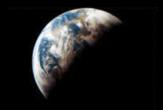Caution: Global Warming May be Hazardous to Your Health

If Earth's climate warms steadily in coming decades, as many scientists predict, heavy smog and extreme weather events could increase health risks in the United States and around the world, scientists said this weekend.
Warmer temperatures could bring increased rainfall to some regions, computer models suggest, as well as heat waves and drought.
The Midwest and Northeast United States could see more frequent stagnation of air masses in the summer, for example. The condition would allow pollution -- harmful low-level ozone and tiny particles that damage the lungs -- to linger and build.
"The air just cooks," said Loretta Mickley, a research associate at Harvard University. "The pollution accumulates, accumulates, accumulates, until a cold front comes in and the winds sweep it away."
Mickley ran a computer model that assumed global warming through the year 2050. The frequency of virtual cold fronts that normally dip down from Canada to clear the U.S. air drops by 20 percent.
Other studies have shown that high levels of pollution are related to an increase in hospital admissions for cardiac and respiratory problems.
Global slowdown
Sign up for the Live Science daily newsletter now
Get the world’s most fascinating discoveries delivered straight to your inbox.
The possible reduction in cleansing cold fronts is based on known aspects of the interconnected global climate. Low pressure systems transfer heat out of the tropics and bring cold air away from the poles. If the planet warms, the poles are expected to warm more quickly. That would decrease the temperature difference between the poles and the equator, so the atmospheric "engine" that moves heat around would slow down.
"If this model is correct, global warming would cause an increase in difficult days for those affected by ozone pollution, such as people suffering with respiratory illnesses like asthma and those doing physical labor or exercising outdoors," Mickley said.
The simulation was presented at the annual meeting of the American Association for the Advancement of Science (AAAS) in Washington, D.C.
In an unrelated study announced Sunday, particulate matter -- basically tiny bits of soot -- was found to thicken the blood and boost potentially harmful inflammation.
In the research, reported in the journal Occupational and Environmental Medicine, scientists exposed human immune cells, umbilical cord cells and lung cells to particulate matter. The blood's ability to clot, or thicken, was enhanced in each.
"The rate of death in immune cells also significantly increased," the researchers report.
Other extremes
Though the causes of global warming are often disputed, most scientists agree change is underway, at least in the short frame of time that humans have been paying close attention. In terms of global average surface temperature, the four warmest years since the 1890s are 1998, 2002, 2003 and 2004. Long-range climate predictions suggest 2005 may top them all given current conditions, such as the state of El Nino.
In a separate presentation at the AAAS meeting Sunday, Jonathan Patz of the University of Wisconsin-Madison said global warming could bring on a wave of health risks.
A possible increase in major storms, heat waves and flooding will be among the deadly effects, rather than the actual warming itself, Patz said.
"Averages don't kill people -- it is the extremes," he said.
Patz cites the heat wave that struck Europe last summer, claiming at least 22,000 lives, as an example of deadly events to come. Other scientists have suggested that the European heat wave, and even the unusual spate of four hurricanes in Florida last year, were related to a warming climate. But scientists are far from agreement on whether individual events like these can be attributed to overall climate change.
One thing is certain: While weather events like hurricanes, tornadoes and floods make for good TV headlines, heat and drought are deadlier.
A review of climate and weather disasters in the United States, going back to 1980, shows the top two killers were heat waves and associated drought, in 1980 and 1988. Combined, at least 15,000 people died owing to hot and dry conditions those two years. Drought contributes to famines and disease outbreaks in less developed countries that kill millions.
Mosquitoes and disease to spread
Scientists are not sure how climate change will affect the planet. Many speculate, based on computer modeling, that generally more extreme droughts, floods and other conditions could be on the horizon.
Increased local rainfall, Patz said, would benefit insects and animals that carry human disease. Similar warnings date back several years.
Several studies have linked increased rainfall to disease outbreaks. More than half of the waterborne disease outbreaks in the United States in the past 50 years were preceded by heavy rainfall, according to a 2001 Johns Hopkins University study.
Another 2001 report in the Journal of Medical Entomology warned that a warmer climate would bring increased mosquito populations and also allow the disease-spreading pests to spread into new terrain.
"Right now the evidence of significant global climate change is minimal, but there are already noticeable increases in human diseases worldwide," David Pimentel of Cornell University said at the AAAS meeting in 2000. "Most of the increase in disease is due to numerous environmental factors -- including infectious microbes, pollution by chemicals and biological wastes, and shortages of food and nutrients -- and global warming will only make matters worse."
Patz advocates long-range planning so government officials are ready to respond to changes and crises. "The key will be early detection, warning and responding to threats," he said.
Robert is an independent health and science journalist and writer based in Phoenix, Arizona. He is a former editor-in-chief of Live Science with over 20 years of experience as a reporter and editor. He has worked on websites such as Space.com and Tom's Guide, and is a contributor on Medium, covering how we age and how to optimize the mind and body through time. He has a journalism degree from Humboldt State University in California.











